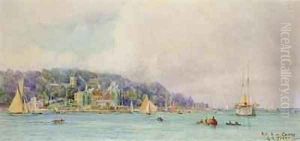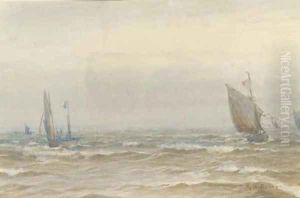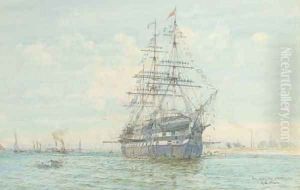Henry Branston Freer Paintings
Henry Branston Freer, born in 1864, was a British artist whose work primarily spanned the late 19th and early 20th centuries. His contributions to the art world, though not as widely recognized as some of his contemporaries, showcase a dedication to exploring various mediums and subjects, reflecting the broader transitions in European art during this period. Freer's career was marked by a keen interest in both the traditional aspects of painting and the emerging styles that would eventually lead into modernism.
Freer's early life was rooted in an environment that encouraged his artistic pursuits. Growing up in the United Kingdom during a period of significant cultural and industrial change, he was exposed to a wealth of artistic movements, from the lingering Romanticism of the early 19th century to the burgeoning Impressionist movement that began to take hold in the latter part of his youth. These influences are evident in his work, which often combines elements of detailed realism with a sensitivity to light and color that hints at the Impressionist concern for capturing fleeting moments.
Throughout his career, Freer exhibited a versatility in both subject matter and medium. His oeuvre includes landscapes, portraits, and still lifes, rendered in oil paints, watercolors, and even etchings. His landscapes, in particular, reveal an artist deeply attuned to the nuances of his environment, capturing both the grandeur of the British countryside and the more subtle interplays of light and shadow that define its everyday beauty.
Despite his talents and the breadth of his work, Henry Branston Freer did not achieve the same level of fame as some of his contemporaries. However, his contributions to the arts were recognized by his peers and by art historians in the years following his death in 1946. Today, Freer's works are appreciated for their technical skill and their role in the transitional period of British art, offering insights into the evolving aesthetic sensibilities of the late 19th and early 20th centuries.
Freer's legacy, while modest in comparison to the giants of his time, remains an important testament to the diversity of artistic exploration during a period of rapid change in the art world. His paintings, often reflective of the shifting moods and landscapes of Britain, continue to be studied for their contribution to the narrative of British art history, serving as a bridge between the traditional and the modern, and reminding us of the quiet innovators who helped shape the contours of modern art.


